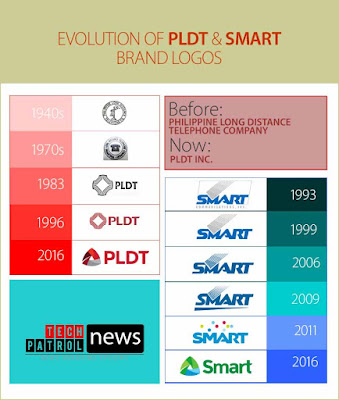For the last five years I have gathered my musings on the Internet, innovation and startup tech companies. I have blogged about these topics part-time at the same time I was working as a strategy consultant and taught innovation courses. On the fifth anniversary, I started screening and sorting out the notes. It was then that I grew conscious there was a common thread that connected the notes. In the span of five years from 2010 to 2015 the Internet and the digital wave have impacted innovation, the world and your business.
There were 22 impacts that most of us (me included) didn’t know about and that show how profoundly digital innovation has shaped our businesses and our world. Here are the impacts on: the origin of ideas, the new unicorns, competition, transformation, and the valley of death.
The new theory about origin of ideas
1. It’s the innovation, stupid!
To innovate is to exploit an idea commercially. Any idea that is new. Ideas in isolation are never to be called innovation but creativity. New means advance for consumers. Some examples: Technical advances are Internet, broandband and smartphones. Non-technical advances are non-traditional distribution and low cost models.
2. True innovators
True innovators act like giraffes: they emerge from the forest. True innovators can think without constraints from the market or their current customer base.
3. Ideas, the good and the bad
Ideas can be selected 1) By hygienic attributes 2) Like an entrepreneur and 3) Like an intrapreneur. A good hygienic idea is one that solves a problem and is applicable, relevant and deliverable. A good entrepreneurial idea is original, uses technology and is profitable. A good intrapreneurial idea is one that has a big market a sound margin and has been tested with clients.
4. One of the three
For your business to be innovative you must be one of the three: 1) Better, 2) Easier or 3) Cheaper.
Great life to new unicorns!
5. Disruptive
Google glasses, 3D printers and big data are often thought of disruptive innovations. But disruptions can only be verified in retrospect. If five years from now any of these great technologies 1) has changed the strategy gear of other companies and 2) has put an entire industry upside down, then they have proved disruptive. No losers, no disruption.
6. It’s the value, not the price
Here’s an experiment: Some parents come late every day to to pick up their kids from school. Tweak the experience: Tell them next time they are late they will pay a 10$ fine per each 30 minutes of delay. At the end of the week I guarantee you’ll have a big piggy-bank and a full class of kids waiting. The important lesson: consumers are eager to pay any price worth value.
7. The simplest format of a business model
A good business model must solve a problem, have customers, generate income, as well as be scalable. In short, a good business model is one that creates true value to a customer. There is no business model in bringing water where there is water.
8. Pizza rule for market size
Your market size is always much smaller than the total available market. I called it the “pizza rule”: never expect a big pizza but a small pizza. You must feed from your potential market not the total available market.
Changing competitors
9. The pricing problem
Paying for what you want is okay. Paying for things you don’t want is not okay. Welcome to the context of abundance in Internet! We were 6 billion people in 2011. Then: 3 billion had a smartphone and 1 billion had Internet. Now: We are over 7 billion and 2 billion have Internet. Joichi Ito (MIT and Creative Commons) says “in the future consumers will be like sponsors”. Till then a problem remains unsolved: how to price consumers?
10. Fear is good in innovation
You choose the ideas you want to work on. Innovation is a game of resisting fear. But fear is also good. Fear helps you with “your (business) first times”: starting a project, dealing with the irrational… Innovation is a path of uneasy moments. You need to pass those steps to (hopefully) get to transformation.
11. Competition DOES exist
Most entrepreneurs and innovators would rather not look at their competitors. Finding there is a competing innovative idea is bad news. But knowing it is good news. Innovators can learn about 1) diseases similar failed businesses died from, 2) what is a good growth rate in their area, 3) who is competing with you outside your business.
12. A tech trend victim?
Most people feel they are always late for big tech trends. Here are three possible strategies. “The academic model”: go and make lists of influential people to follow. This includes investors, startups, tech news journalists, Stanford and MIT professors. “Against the tide model”: go and look for unsolved problems. Mark Cuban says: “Look where others are not looking”. Finally, “Being late but nailing it”: better to be the best than first like Facebook, Google, Apple, Ford, Boing, Quora and Tumblr.
Transformation and the valley of death
13. Valley of Death
You start your idea between the 19th and 22nd months as the curve of interest stagnates. Fresh ideas are like TV show scripts: episode one thrills and early adopters get interested, but then you have to probe the idea’s worth to the mainstream.
14. Your product is “fiction”
Lisa Gansky says “any new idea you start is a fiction product”. To create an original thing means doing a puzzle. There are technology pieces. And there are non-technology pieces: Do customers want it? Does a market exist for it? Pricing? Did early adopters tell you any clue for adding new customers? Who I should partner with? Many people use a shortcut “The bestseller strategy”: they launch many short and low cost projects hoping that one of them will make it.
15. At your service
Here is a new customer service paradigm. Prior to social networks clients were at the service of a company. With social networks it is the company that is at the service of the customers. Customers now click the search box. If they like the opinions they find… they will trust you.
16. On Pivoting
Making decisions is not for dumb people. To pivot to a new model is not a piece of cake. It takes loads of courage. Sarah Lacy (Pando) says: “I criticize euphemisms like to pivot. Few startup leaders are able to recognize they made an error”.
17. On cockroaches
Startups should be like cockroaches. A famous quote by Paul Graham (YCombinator) says: “Apparently the most likely animals to be left alive after a nuclear war are cockroaches, because they’re so hard to kill. That’s why you want to be as a startup, initially. Instead of a beautiful but fragile flower that needs to have its stem in a plastic tube to support itself, better to be small, ugly, and indestructible.”
18. The F Generation
Hackers are the new heroes to a generation of millennials that enter the workforce. Gary Hamel called them “the F generation”. Instead of hierarchies, fixed tasks and closed groups the new employees will demand open companies. Users (and not the bosses) will have the power.
19. Students for a lifetime
Sebastian Thrun saw it first: “the very pattern of employment is changing. A few generations ago, a single job often lasted for a lifetime. In 2012, the average job tenure was a mere 4.6 years. Tech start-ups like Airbnb, Lyft, and Uber are using freelance employment models to disrupt hospitality, transportation, and many other industries. As a result, workers are under increasing pressure to keep their skills current. This has enormous implications for the educational needs of the global population.”
20. Crucial Imbalances
Kodak had on its peak over 140,000 employees. Instagram had 13 employees when it was sold to Facebook. Technology and Internet has been good for our society and our world. But new voices from Internet skeptics are arising.
21. Innovating on the move
Ideation is an important but insufficient part in innovation. “To act in innovation you have to ideate new things”, we were told. But innovation means solving problems. Innovation is more than that unique time that you started your business. Innovation is not sole harvest.
22. Design is the new black
Design thinking is like Lego bricks: blocks to work on original concepts. Map, Explore, Built and Test.
Altogether, one can look at these 22 changes as a new wave of thinking that is revolutionizing the way we work with and integrate innovation in our companies. And it all started with the digital wave.















